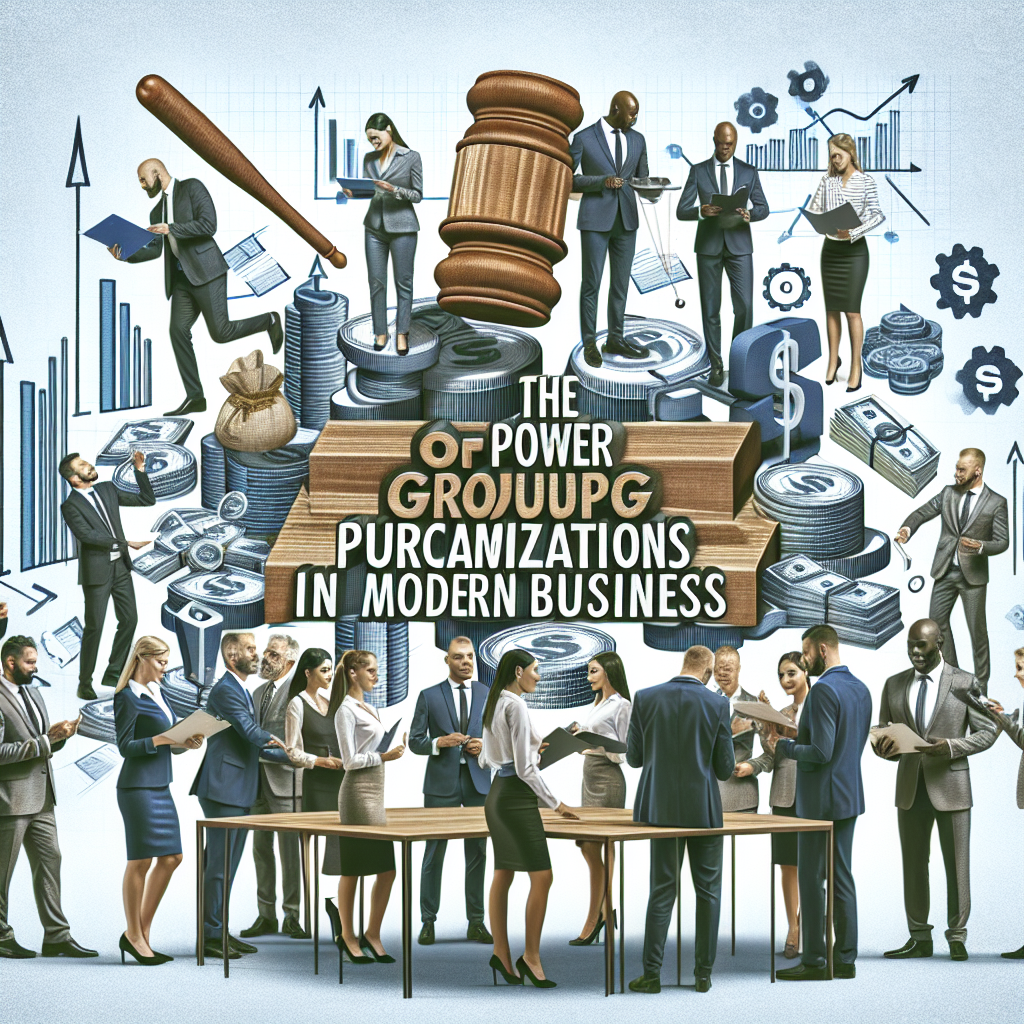Introduction
Communicating the value of procurement to the C-Suite is crucial in today’s business landscape. The role of procurement has evolved significantly, transforming from a mere cost-saving function to a strategic driver of organizational success. This shift means that procurement officers and their teams are now at the forefront of innovation, risk management, and operational efficiency.
Understanding this evolution is key. In the past, procurement was often seen as a back-office function, but now it is recognized as essential for achieving broader company goals. Sharing this perspective with executives helps them appreciate the strategic impact you bring.
However, to effectively communicate this value, it is important to align procurement goals with CEO priorities. For instance, incorporating budget optimization tips into your procurement strategy can significantly enhance your credibility with the C-Suite.
Moreover, building strong relationships with C-Suite members is essential. This involves demonstrating how procurement can contribute to areas like employee morale and productivity. A practical example could be utilizing break room supplies to boost employee morale which in turn enhances productivity – a key concern for any CEO.
Additionally, showcasing metrics and case studies can effectively illustrate your team’s contributions. This could include demonstrating how janitorial supplies have improved workplace cleanliness and health, thereby reducing absenteeism – another area of concern for executives.
Ultimately, understanding the broader implications of procurement and its strategic value can help solidify your position as a critical player within your organization. And remember, leveraging resources such as a Group Purchasing Organization (GPO) can further optimize your procurement process.
Understanding CEO Priorities
CEOs often juggle multiple priorities, with a keen focus on:
- Cash Flow: Ensuring liquidity and managing budget effectively.
- Growth: Driving expansion through new markets and products.
- Innovation: Leveraging technology and innovative practices for competitive advantage.
Aligning procurement goals with these executive objectives is crucial. By demonstrating how procurement can enhance cash flow through cost-saving measures, support growth via strategic sourcing, and foster innovation by partnering with forward-thinking suppliers, you create a compelling narrative that resonates with the C-Suite.
Effective communication is key. Use data-driven insights to articulate how procurement initiatives align with the company’s broader strategy. Presenting clear, relevant metrics and success stories can significantly elevate the perception of procurement’s value among top executives.
Building Relationships with C-Suite Executives
Creating strong relationships with C-Suite executives is like building any other relationship—it takes time, effort, and a bit of strategy. Here are some ways to establish a solid rapport:
- Engage in Regular Communication: Schedule regular meetings to keep executives informed about procurement activities and successes. This keeps the lines of communication open and demonstrates your proactive approach.
- Invite Executives to Supplier Visits: Nothing beats firsthand experience. Invite C-Suite members to join supplier visits. This can provide them with valuable insights into the supply chain and the strategic decisions involved in choosing suppliers.
- Position Procurement as Solution-Oriented: Show how procurement can solve problems and create value. Whether it’s through innovative sourcing strategies, leveraging GPO supplier networks, or consulting firms for specialized needs, emphasize procurement’s role in achieving organizational goals.
Building these relationships isn’t just about keeping the C-Suite informed; it’s about shifting their perception of procurement from a cost center to a strategic partner.
Demonstrating Value Through Metrics and Case Studies
To showcase the financial impact of procurement initiatives, it’s essential to quantify results. Highlighting cost savings through detailed metrics can significantly bolster your argument. For example, cost savings calculators can provide a clear picture of savings over time, breaking down the tangible benefits in an easily digestible format.
Leveraging case studies and success stories is another powerful way to demonstrate value. Whether it’s a successful supplier negotiation that led to significant cost reductions or an innovative procurement strategy that enhanced operational efficiency, real-world examples resonate. These stories not only illustrate success but also highlight procurement’s role in driving positive outcomes.
However, it’s important to be aware of common pitfalls in procurement. Understanding these 6 classic procurement failures and how to overcome them can help mitigate risks and ensure smoother operations.
Incorporating industry research and benchmarks can further strengthen your case. Data-driven insights from trusted sources offer credibility and context, helping executives understand how your procurement strategies align with broader industry trends and standards. By presenting a comprehensive view backed by hard numbers and compelling narratives, you effectively communicate the strategic importance of procurement.
Moreover, employing effective cost reduction strategies can significantly enhance the value delivered through procurement initiatives. This could involve renegotiating supplier contracts for better rates or finding alternative suppliers who offer similar quality at lower prices.
Transitioning to a Strategic Role in Procurement
Shifting from operational tasks to strategic decision-making transforms procurement into a powerhouse of value creation. Instead of focusing solely on cost-cutting, senior professionals in procurement now identify and advocate for value opportunities within their organizations. This evolution means moving towards proactive engagement with stakeholders, adopting data-driven insights, and aligning procurement goals with broader business objectives.
Key Responsibilities in the Transition
- Identifying Value Opportunities: Pinpoint areas where procurement can drive innovation or efficiency. For example, leveraging supplier relationships to co-create new products or streamline supply chains.
- Advocating for Strategic Procurement: Present compelling cases to the C-Suite showcasing how strategic procurement initiatives can deliver long-term benefits beyond immediate cost savings.
A key aspect of this transition is understanding the different purchasing strategies available. For instance, exploring the pros and cons of direct vs. GPO purchasing can significantly optimize your organization’s procurement strategy.
Encouraging senior professionals to embrace this transition is vital. Engaging in continuous education, staying updated with the latest best practices, and adopting strategic procurement playbooks will equip them to lead this change effectively. The shift not only elevates the role of procurement but also strengthens its impact on organizational success.
Change Management Support from C-Suite Executives
Securing change management support from C-suite executives in procurement is crucial for the success of any transformation initiative. Their backing not only legitimizes the efforts but also accelerates adoption across different levels of the organization.
The Necessity of Executive Support
When executive support is firmly in place, it sends a clear message that procurement initiatives are aligned with the company’s strategic goals. This alignment ensures that all departments recognize the importance of these changes, promoting a unified approach.
Impact on Spend Management and Organizational Influence
Executive endorsement significantly boosts spend management practices, including tail spend management, which empowers procurement leaders to implement policies that enhance cost savings and efficiency. Additionally, this backing increases procurement’s influence within the organization, making it easier to drive impactful strategies.
Examples of Successful Change Management in Procurement
- Case Study: Company X – When transitioning to a digital procurement platform, Company X had full executive backing. This support facilitated seamless integration and rapid user adoption, resulting in a 20% reduction in operational costs within the first year.
- Case Study: Organization Y – Executive champions in Organization Y advocated for sustainable sourcing practices. Their commitment led to successful partnerships with eco-friendly suppliers and elevated the company’s brand reputation.
Understanding these dynamics helps procurement professionals realize why C-suite support is indispensable for driving meaningful change. This includes areas such as supplier relationship management and vendor management, both of which are critical for successful procurement operations.
Shifting Focus of Procurement Functions
Procurement has evolved from a back-office operation to a strategic driver of organizational change. This transformation involves addressing modern procurement challenges, such as:
1. Operational Efficiency
Streamlining processes to reduce costs and improve productivity is more critical than ever. Leveraging technology and data analytics can help achieve greater efficiency. For instance, partnering with a Tier One Woman-Owned Office MRO Supplier can significantly lower your business costs while providing unbeatable pricing and dedicated customer support.
2. Sustainability and ESG Concerns
Environmental, Social, and Governance (ESG) concerns are now at the forefront. Procurement plays a crucial role in ensuring that sourcing practices align with sustainability goals.
3. Adapting to Modern Business Needs
Today’s procurement professionals must be agile, ready to pivot strategies in response to market dynamics. This adaptability is vital for staying relevant and driving value across the organization. To achieve this, embracing small business procurement strategies can be beneficial.
Change managers within procurement teams are instrumental in leading these initiatives, pushing forward purchasing change and fostering organizational change. They often leverage the power of Group Purchasing Organizations (GPOs) which aggregate purchases for better deals, a strategy that has proven essential for business success.
Modern Spend Management Practices
Executives often misunderstand the strategic value of spend management. These misconceptions can prevent them from seeing procurement as a crucial driver of organizational success. It’s essential to communicate clearly how effective spend management strategies contribute to overall performance.
Key Benefits of Spend Management
- Enhanced Financial Health: Efficient spend management ensures every dollar is utilized optimally, directly impacting cash flow and profitability.
- Risk Mitigation: By carefully managing expenditures, organizations can anticipate and mitigate financial risks, ensuring stability.
- Innovation and Growth: Strategic allocation of resources frees up capital for innovation, driving growth and competitive advantage.
The Importance of Tail Spend Management
A significant aspect of overall spend management is Tail Spend Management, which often gets overlooked. This involves managing the less significant portion of spending that can accumulate to a notable amount if not controlled. By implementing a strategic approach to tail spend, organizations can unlock substantial savings and improve overall financial health.
Moreover, understanding the nuances of Tail Spend can lead to enhanced visibility and cost reduction. This guide on procurement strategies offers valuable insights into optimizing tail spend for better results.
Enhancing Stakeholder Awareness
To bridge the gap in understanding, consider these techniques:
- Educational Workshops: Regular sessions to educate stakeholders on the importance and impact of spend management practices.
- Transparent Reporting: Provide clear and concise reports showcasing how procurement initiatives have saved costs or added value.
- Success Stories: Share real-life examples where spend management has led to measurable improvements in performance.
Implementing these strategies can foster a culture that appreciates and supports strategic procurement initiatives, aligning with broader company goals. This shift towards a Spend Culture can significantly optimize your organization’s spend management practices.
Risk Management and Procurement’s Role
Procurement plays a critical role in mitigating risks that can impact an organization’s financial stability. Effective sourcing strategies, such as optimizing procurement, are essential for managing brand reputation, ensuring that procurement decisions align with the company’s values and public image.
Addressing global economic uncertainties requires robust procurement practices. In times of economic flux, having a resilient supply chain is vital. Organizations need to update procurement software and adopt technologies that enhance visibility and control over their supply chains.
Key strategies include:
- Diversifying suppliers to avoid dependency on a single source.
- Implementing rigorous vetting processes for new suppliers to ensure quality and compliance.
- Building strong relationships with existing suppliers for better collaboration during crises.
By focusing on these areas, procurement can build its potential as a strategic function, helping organizations navigate financial and operational risks effectively. This journey often involves continuous learning and adaptation, as illustrated by Frank Corris’s transformative experience in mastering procurement through learning and adaptation.
Collaboration with Other C-Suite Members
Aligning procurement strategies with broader company goals ensures that procurement is not working in isolation but as a cohesive part of the corporate strategy. This alignment helps in achieving organizational alignment and drives better synergy across various departments.
Enhancing visibility and influence through collaboration with other departments is crucial. Regularly engaging with finance, operations, and marketing teams can help highlight procurement’s role in achieving cost efficiencies and innovation. For instance, a McKinsey procurement report found that cross-functional collaboration often leads to significant improvements in procurement outcomes.
Some successful cross-functional initiatives involving procurement include:
- Joint Product Development: Procurement teaming up with R&D to source materials that cut costs without compromising on quality.
- Sustainability Projects: Partnering with the sustainability department to ensure that suppliers meet environmental standards.
- Cost Reduction Programs: Working closely with finance to identify areas where strategic sourcing can lead to substantial savings.
These examples demonstrate how procurement can drive value by aligning its functions with broader organizational priorities.
Conclusion: Embracing the Evolving Role of Procurement Professionals in Corporate Success
Communicating the value of procurement to the C-Suite is no longer a choice but a necessity. As procurement professionals, your role has evolved from a back-office function to a strategic driver of organizational success. By leveraging relationships and metrics, you can effectively engage with executives and demonstrate the transformative impact of procurement.
Key Takeaways:
- Build Strong Relationships: Foster connections with C-Suite members to align procurement goals with executive objectives.
- Use Metrics and Case Studies: Showcase the financial impact of your initiatives through concrete data and real-world examples.
- Adopt Strategic Roles: Transition from operational tasks to strategic decision-making to unlock new value opportunities.
By doing so, you position procurement as an indispensable part of the organization’s growth and innovation strategy.
Connect with Hubzone Depot for Further Insights on Driving Value Through Strategic Procurement.





